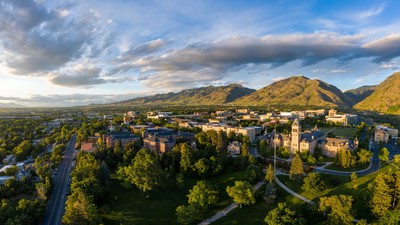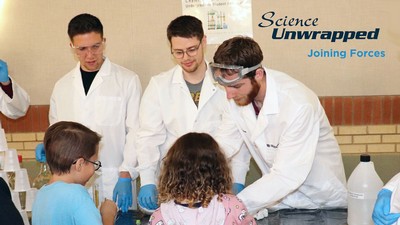Semina Culture: Wallace Berman & His Circle
The Nora Eccles Harrison Museum of Art on the Utah State University campus opens the new year with a new exhibition and opening reception. Semina Culture: Wallace Berman & His Circle can be been Jan. 10-March 15, with an opening reception Jan. 10. Guest curators for the exhibit are Michael Duncan and Kristine McKenna.
The opening reception and curator’s tour of the exhibition begin at 6 p.m. in the museum’s Upper Gallery. Refreshments will be served. The exhibition is free and open to the public and has been made possible by a grant from the Marie Eccles Caine Foundation. The curator’s tour and presentation has been made possible by a grant from the Utah Humanities Council.
An important artist of the post World War II generation, Wallace Berman was a catalyst and inspirational mentor, carrying the ideas and ideals of one group of people to another as he moved through a wide spectrum of creative, social and political circles during the fifties and sixties in southern California, said Victoria Rowe, NEH museum director. Organized by the Santa Monica Museum of Art and co-curated by Duncan and McKenna, this is the first major museum examination of the significance of the charismatic Berman — his eclectic worldview and non-nine-to-five lifestyle, Rowe said. It includes the complete loose-leaf run of Semina — a hand-printed, free-form art and poetry journal that Berman published and personally distributed — and artworks by contributors to Semina, as well as by those who were part of the close-knit “Semina Culture” community, largely people from the West Coast.
Semina and other important objects in the exhibition are on loan from Utah State University’s Special Collections and Archives and the Nora Eccles Harrison Museum of Art. The exhibition and accompanying catalog offer breakthrough insights and rigorous scholarship about an emerging counterculture whose rich array of innovative artistic voices contrasted with the cultural conformity of Eisenhower-era America, Rowe said.
In addition to the complete Semina publication — an iconic document of Berman’s idiosyncratic artistic point-of-view — the exhibition includes more than 50 of Berman’s photographs, recently printed from vintage negatives and shown for the first time; a 90-minute program of short films by Berman, Russel Tamblyn, Curtis Harrington, Lawrence Jordan and Bruce Conner; a compelling selection of publications and documents integral to the world of Semina Culture; and rarely exhibited works in a variety of mediums by 48 artists, friends and collaborators in Berman’s artistic projects. (The 48 include: Robert Alexander, John Altoon, Toni Basil, Paul Beattie, Ray and Bonnie Bremser, Charles Brittin, Joan Brown, Cameron, Bruce Conner, Jean Conner, Jay DeFeo, Diane DiPrima, Kirby Doyle, Bobby Driscoll, Robert Duncan, Joe Dunn, Llyn Foulkes, Loree Foxx, Ralph Gibson, Allen Ginsberg, Billy Gray, George Herms, Jack Hirschman, Dennis Hopper, Billy Jahrmarkt, Jess, Lawrence Jordan, Patricia Jordan, Bob Kaufman, Philip Lamantia, William Margolis, Michael McClure, Taylor Mead, David Meltzer, Henry Miller, Stuart Perkoff, John Reed, Arthur Richer, Rachel Rosenthal, Jack Smith, Dean Stockwell, Ben Talbert, Russel Tamblyn, Aya (Tarlow), Edmund Teske, Zack Walsh, Lew Welch and John Wieners.) These artists of the “beat” generation created works infused with memory, lyricism and a sense of the ephemeral.
Art was a joyful and creative expression for these iconoclasts, not a means to an art world career, Rowe said. “Their approach to the purpose and formal nature of art and culture existed on a vastly different track from the canonical traditions of abstract expressionism, minimalism and postmodernism,” she said.
The comprehensive catalog that documents the exhibition is published and distributed by Santa Monica Museum of Art and DAP. Semina Culture will travel to the Ulrich Museum of Art, Wichita State University, Wichita, Kansas (April 21–July 9, 2006); the University of California, Berkeley Art Museum & Pacific Film Archive, Berkeley, California (Oct. 17–Dec. 10, 2006); and The Grey Art Gallery, New York University, New York, New York (Jan. 16–March 31, 2007).
The Nora Eccles Harrison Museum of Art is located on the USU campus at 650 North 1100 East, Logan, Utah, 84322, (435) 797-0163, Fax (435) 797-3423. Additional museum information is posted on the Web site.
The museum is open Tuesday, Thursday and Friday, 10 a.m.-4:30 p.m.; Wednesday, 10 a.m.-7p.m.; Saturday, noon-4 p.m. The museum is closed Sundays, Mondays and major holidays. Admission is free.
For more information or to schedule a tour of the museum, call (435) 797-0165. The museum is accessible to persons with disabilities. Parking for the museum is available in the lot "C3" to the east of the museum. Parking is $4. After 3:45 p.m. parking is free. Parking is also free during weekend hours. Additional parking is also available in the parking terrace near the Taggart Student Center and lot "F" located at the corner of 700 North and 1200 East (see www.usu.edu/parking/Visitor.htm) or call 797-3414.
Media contact and writer: Deb Banerjee, 435-797-1414
Wallace Berman Self portrait, Topanga Canyon 1974 (printed in 2004), posthumous Gelatin Silver Print, 16 x 20 inches, courtesy Wallace Berman Estate.
Comments and questions regarding this article may be directed to the contact person listed on this page.






